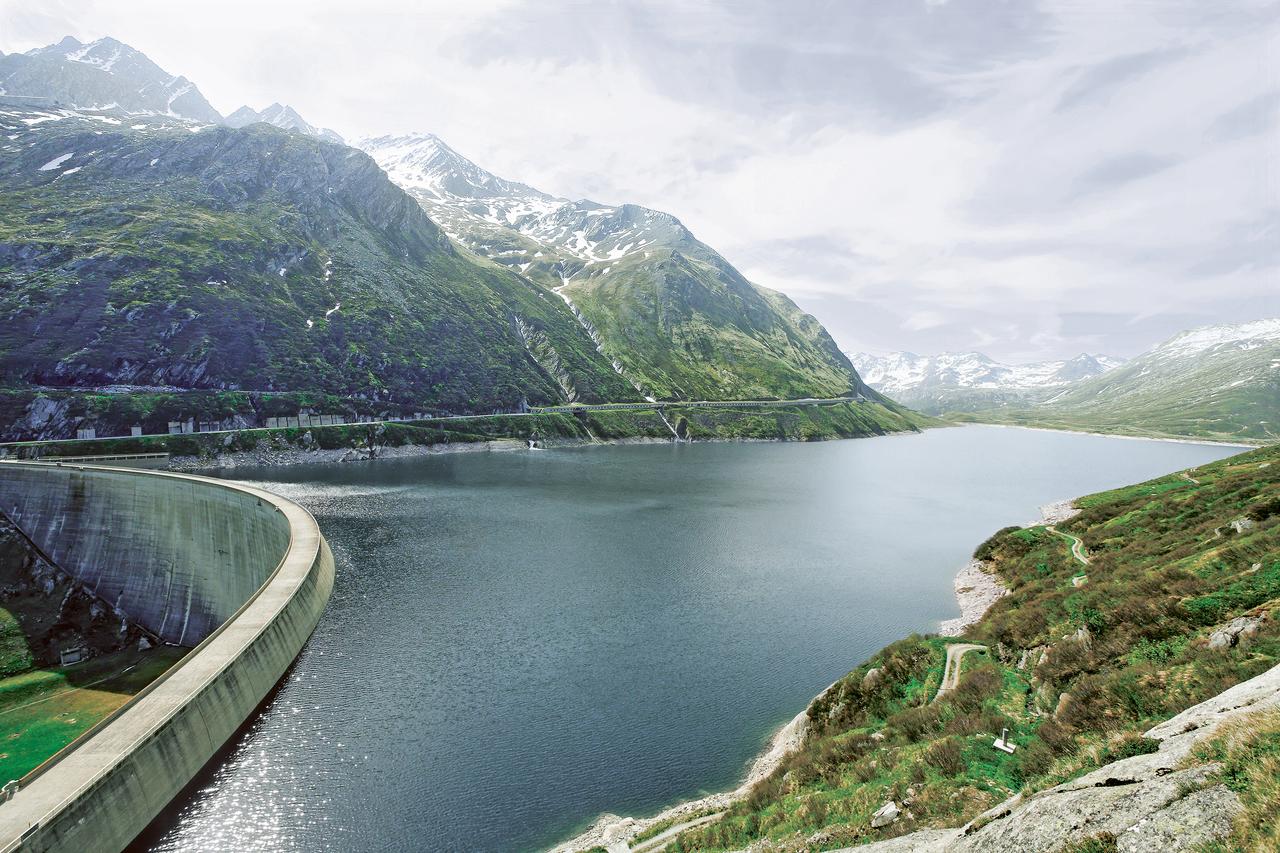09.07.2024 | Aerial efficiency: monitoring power plants and the grid using drones
Hydrone propels pilot expertise sky-high
Flying a drone? Easy. Or is it? Operating drones legally and safely requires knowledge and practice. Axpo Hydro Digital’s hydrone provides the requisite tools for this both internally and externally.

They detect corrosive damage to power lines, monitor dam walls and water catchments or material displacements following flushing, and survey suitable areas for PV systems. They monitor roofs, weirs, solar energy systems, but they also check for avalanches and landslides. Drones – the advantages are clear: they can get to people quickly in dangerous and inaccessible locations, deliver high-resolution images, be operated remotely, do their job along a pre-programmed flightpath or completely autonomously. All of this saves time and resources.
Drones systematically scan objects and areas, and the image data obtained in the process can be converted into 3D models. The digital twin this creates can help when planning necessary works on infrastructure, or programming a flight route for regular monitoring via drone. Unsurprisingly, depending on the model these versatile helpers can reach anywhere up to the price of a small car.
Centrally organized drone airline
hydrone is Axpo’s own centrally organized drone airline. More than 50 different units are on stand-by for a wide range of different assignments and not just for the facilities owned by the Axpo Group. These serve external facilities like the Gösgen and Leibstadt nuclear power plants, in which Axpo is a shareholder, as well as other electricity distributors and suppliers, such as the Hinterrhein or EWA energieUri power plants, too.
hydrone’s job is to provide operators of critical infrastructure with step-by-step assistance in the professional use of drones. hydrone guides users through the jungle of regulatory requirements, trials new technologies, takes care of drone certification and provides pilots with on-site support during complex drone assignments.
Platform with roughly 120 pilots
The “pilot-in-chief”, initiator and driving force behind hydrone is Klaus Liedtke, Digital Transformation Project Manager at Axpo Power. “As simple as it might look to fly drones, using them properly is anything but straightforward. The laws and regulations are changing constantly. You need to stay up to date and adhere strictly to the regulations. That’s not to mention the rapid pace of technological advances in hardware and software,” he says. Around 120 pilots are connected to the platform. They receive training and their knowledge and skills are refined to ensure they can operate drones safely and in compliance with the regulations of Swiss and European airspace. The pilots are also given support on site where necessary.
hydrone doesn’t “just” train the pilots, Axpo also trains the drones themselves – or, to put it more accurately, the machine learning algorithms developed in-house for them, guaranteeing extensive drone knowledge and a broad range of support services under one roof at Axpo. And word has gotten out: more and more external parties are enlisting hydrone in their projects.
Networking, refreshing knowledge, sharpening skills
In mid-June, hydrone invited people to its first knowledge-sharing event on the site of the Eglisau hydropower plant, where the flying conditions were optimal. The event saw 30 drone pilots from across Switzerland and from a range of sectors come together. “Sharing and networking, developing our own skills and getting to know the latest technologies – that’s the aim of the event,” explained Klaus Liedtke, Digital Transformation Project Manager at Axpo Power, on the periphery of the event. “The event is also aimed at giving pilots hands-on training in the operation of drones, as well as evaluating new possibilities for application and simply having fun flying drones,” he added. For participants there was an update on the subject of “regulatory and legal requirements for the professional use of drones” and new in-house app developments, like the Pilot app, an electronic, centrally maintained logbook. In addition to that, Arnold Flepp, Deputy Head of the Construction/Dam division at Axpo Hydro Surselva, and Romeo Wildhaber, Overhead Linesman at Axpo Grid, demonstrated how drones were used specifically in their respective areas.
Then it was on to the practical side of things, with a demonstration of how to produce a 3D model of an object to be surveyed, or how the Dji Dock 2 for autonomous drone operation works. The Dock is a new arrival on the European market and designed specially for hard-to-access places and extreme weather conditions. The participants were also given a chance to operate the drones themselves. One assignment they were set was indoor inspection using FPV. FPV stands for “First Person View”: this is where the pilot flies the drone from the drone’s perspective with the aid of virtual reality glasses. Participants also practiced flying outside with thermal imaging cameras. It quickly became clear how well trained the participants were, as they mastered the exercises with flying colors.




.jpg)





